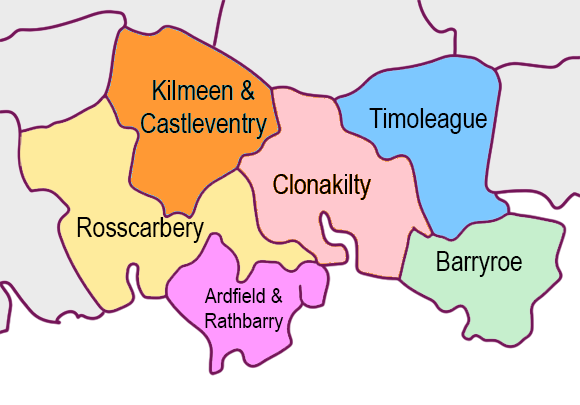Documentary evidence places the foundation of the Friary at Timoleague between 1307 and 1316
Though physical evidence suggests that a pre-existing 13th century building was incorporated into the site. According to the Annals of the Four Masters, the Friary was founded by the McCarthy Reagh family in 1240.
By the 15th Century the Friary was recognised as a significant place of learning. Blessed Thaddeus McCarthy Reagh (1455-29/10/1492) is said to have been educated by the Friars of Timoleague. Despite the dissolution of the monasteries in 1540 by Henry VIII, the Friars remained in Timoleague.
In 1642 Timoleague Friary was burned by crown forces. Some friars escaped by rowboat heading west to Sherkin Island, where there was also a friary, to take refuge with their brothers. They were rescued by fishermen from Cape Clear, who saw their boat drifting at sea. They found three friars in the boat, two were dead and the third utterly exhausted. He left a box in the custody of the people of the house until his return, but he never came back.
In 1855 the Parish Priest, Fr. Henry Leader, was visiting Cape, and spotting the box, enquired as to its history and to what it contained. As the family were instructed by the Friars, it had never been opened in over 200 years. So, the Priest gave instructions to open it; it contained the remains of vestments, and also a chalice that had been made in London in 1633. It was returned to Timoleague Parish and is known as the Timoleague Chalice.
In October 2024, it was used at Mass by the priests of the Diocese of Cork and Ross during their annual priests’ retreat.


